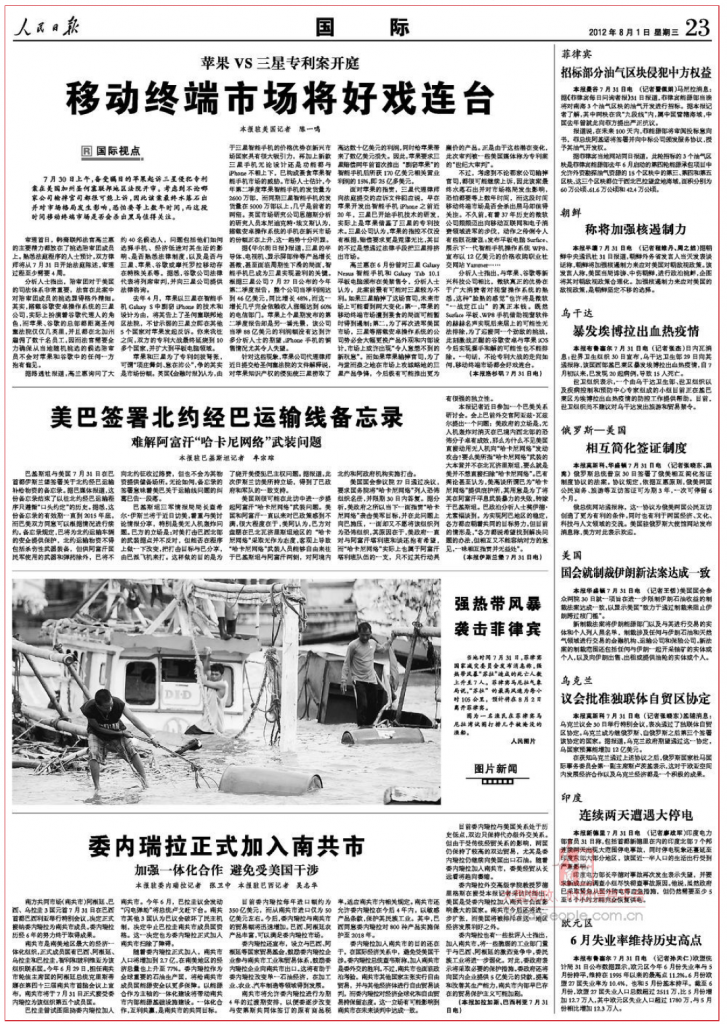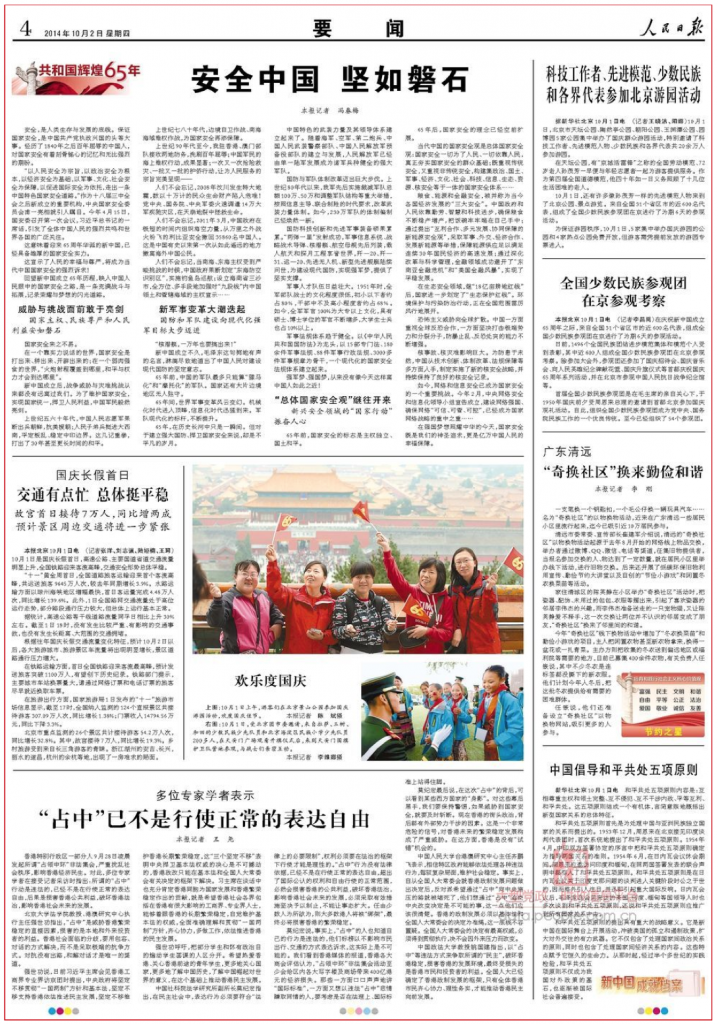TODAY an international tribunal ruled against China’s claim to almost exclusive control over the South China Sea on the basis of the so-called “nine-dash line” — a demarcation boundary that first appeared on a naval map in 1947 (then as an eleven-dash line). The ruling was made in favour of the Philippines under the United Nations Convention on the Law of the Sea (UNCLOS), to which both countries are signatories.
We won’t review the back and forth of this process, or discuss its regional implications. However, this dispute is virtually assured front-page play in tomorrow’s edition of the Chinese Communist Party’s official People’s Daily. So we want to provide you with preemptive context.
How exactly has the “nine-dash line” played in the Party’s flagship newspaper over the breadth of the PRC’s history?
In fact, the phrase “nine-dash line” has appeared just 15 times in the entire history of the newspaper, and in just six separate articles. Moreover, the first of those articles came on August 1, 2012, less than three months before Xi Jinping came to power. There were three articles in 2014 (that’s right, none in 2013), and so far there have been two this year, the latest on July 5.
The phrase has never made it on the front page of the People’s Daily. But that could possibly change tomorrow.
The first reference to the nine-dash line appears at the back of the August 1, 2012, edition of the People’s Daily, in an article about the Philippine’s auctioning of oil blocks in the South China Sea.

[ABOVE: The first reference to the nine-dash line appears at the back of the August 1, 2012, edition of the People’s Daily, in an article about the Philippine’s auctioning of oil blocks in the South China Sea.]
For its first appearance in the People’s Daily, the “nine-dash line” snuck in the back door, making page 23 of the paper in an article filed from Bangkok called, “Auctions of a Portion of Oil Blocks Violates China’s Interests.” The story began: “According to the understanding of this newspaper’s reporter, two of the oil blocks are located within my [country’s] ‘nine-dash line’, and belong to territorial waters, a matter on which China voiced serious objection to the Philippines last year.”
Can you spot the article on the page to the left? Not easily. That’s because it’s tiny — up in the top right-hand corner of the page, with a little tag that reads “Philippines.”
The report goes on to provide details on three separate oil plot auctions in the South China Sea, citing websites in the Philippines.
For the next piece, on April 1, 2014, the term “nine-dash” line graduates to page six. Things are now getting more serious, the Philippines having lodged its case with the international tribunal. Read the headline now and this People’s Daily article is a true eat-your-own-words moment: “Overseas Experts and Scholars Believe Philippine Referral to the International Tribunal is a Monodrama Doomed to Fail.”
The article quotes Singapore-based expert Ian Storey as saying that the tribunal process should take more than a year because “as the case concerns the validity of China’s ‘nine-dash line’ assertion, no decision can be executed forcibly.” It then quotes National University of Singapore’s Robert Beckman as saying that “the arbitration must consider China’s assertion of ‘historical rights’ to resources within the ‘nine-dash line.’”
The October 2, 2014, edition of the People’s Daily includes a large article at top right commemorates the PRC’s 65th anniversary by listing out things Chinese must “never forget,” including the imperative of defending its sovereignty within the nine-dash line.

[ABOVE: The October 2, 2014, edition of the People’s Daily includes a large article at top right commemorates the PRC’s 65th anniversary by listing out things Chinese must “never forget,” including the imperative of defending its sovereignty within the nine-dash line.]
By June 3, 2014, the “nine-dash line” has made page three of the People’s Daily. The article deals with a press conference at the annual Shangri-La Dialogue in Singapore, attended by PLA General Wang Guanzhong (王冠中) and U.S. Defence Secretary Chuck Hagel. “After his speech,” the People’s Daily reports, “Wang Guanzhong responded to questions from attendees at the meeting about China’s nine-dash line claims in the South China Sea, explaining in detail the history and evidence.”
It’s at this point that the ‘nine-dash line’ in the People’s Daily becomes the nine-dash line in the People’s Daily. See the crucial difference?
Skipping ahead to this year, we have two pieces coming as anticipation of the tribunal’s decision grows. The first, dating to June 20, appears back on page 21 — where it most surely belongs. We could not locate the proper name of the “American author” and documentary film producer it quotes in favour of China’s claims. Who is 肯·麦尔科德? Ken McCord? This is actually a favoured approach in these People’s Daily articles — referring this issue to (often dubious) foreign “experts,” as though all reasonable opinion in the rest of the world favours China’s argument.
The final article appears one week ago, on July 5, 2016, on page three of the People’s Daily. The piece is a cantankerous anticipation of today’s decision: “China Will Not Accept An Illegal Ruling On Its Sovereignty and Interests in the South China Sea.”
What form will this failure to accept the “illegal ruling” take? That, folks, is tomorrow’s news.




















